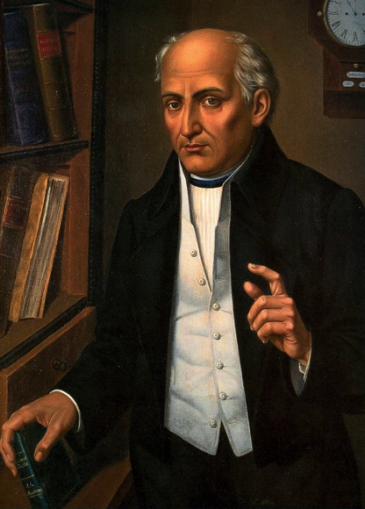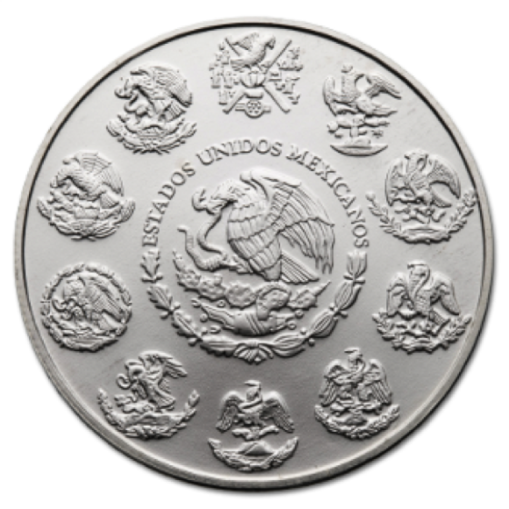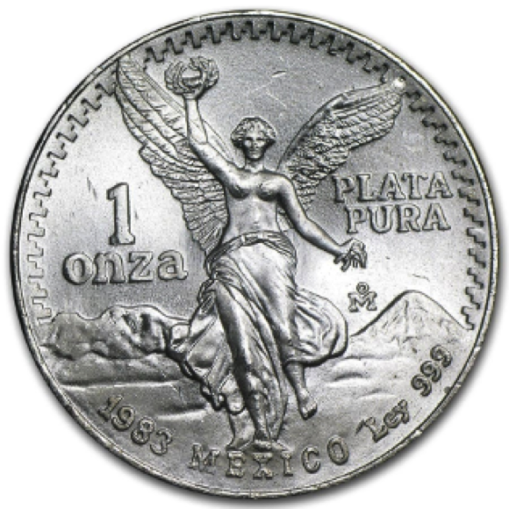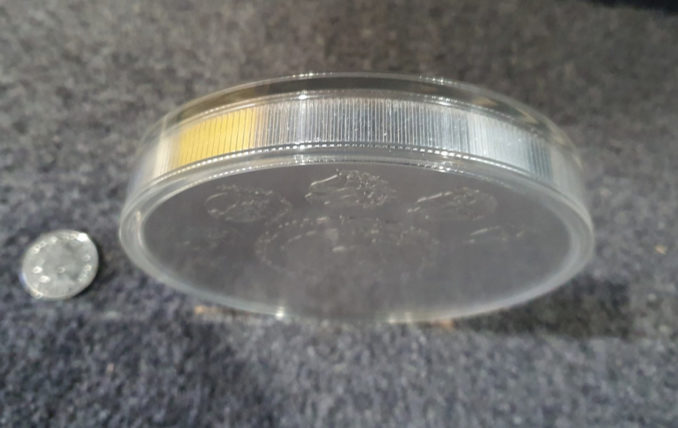Previous articles in this series have focused heavily on British coins produced by the Royal Mint. I thought it would be interesting to do some articles on precious metal coins from other countries around the world, starting with the Mexican Libertad, a coin highly sought after by collectors around the world, but one which you may not have heard of.
Mexican Independence
Libertad translated in English means ‘freedom’.
The Libertad is a symbol of Mexico’s independence, Mexico won its independence from Spain on August 24th, 1821, however, this is not the date of its celebrated ‘Independence Day,’ that date is September 16th.
On September 16th, 1810, Miguel Hidalgo y Costilla, a Catholic priest, started the Mexican War of Independence when he gave his famous speech “Grito de Dolores” or “Cry of Delores,” named after the town in Guanajuato where it took place.

Miguel Hidalgo, siglo XIX, imagen tomada de: Jean Meyer, “Hidalgo”,
Jerónimo Híjar – Public domain
He rang the bell of his church to get the town’s attention, and he called on the people to rise against their Spanish-European occupiers, who had ruled the country for over 300 years, and redistribute land and establish racial equality. Thousands of Indians and mestizos flocked to Hidalgo’s banner of the Virgin of Guadalupe, and soon the peasant army was on the march to Mexico City. His populist army came close to capturing the Mexican capital but was defeated at Calderón in January 1811. He fled north but was captured and executed. He was followed by other peasant leaders such as José María Morelos y Pavón, Mariano Matamoros, and Vicente Guerrero, who all led armies of native and racially mixed revolutionaries against the Spanish and the Royalists.
Ironically, it was the Royalists – made up of Mexicans of Spanish descent and other conservatives – who ultimately brought about independence. In 1820, liberals took power in Spain and the new government promised reforms to appease the Mexican revolutionaries. In response, Mexican conservatives called for independence as a means of maintaining their privileged position in Mexican society and independence was finally granted in August 1821.
The Mexican Mint
Established by the Spanish viceroy Antonio de Mendoza in 1535 under the authority of the Spanish crown, La Casa de Moneda de México (the Mexican Mint) became the first mint in the Americas.
The first coins struck by the mint were the Silver 8 Reales followed by the Silver peso. The Silver peso became widely circulated throughout North America and Asia well into the 1800s and served as the inspiration for many modern currencies including the Chinese yuan, the Japanese yen and the American dollar. Since 1983, all coins minted by the national mint of Mexico are produced in San Luis Potosí and the original site of the mint is now the headquarters for Museo Nacional de las Culturas in Mexico City.
The Libertad
Libertad coins are silver and gold bullion coins produced by the Mexican Mint. Libertads contain either 99.9% silver or gold (.999 fineness) and are available in various sizes/weights.
First produced in 1982, the obverse of the coins displays the coat of arms of Mexico with a Mexican golden eagle perched on a prickly pear cactus devouring a rattlesnake. This imagery relates to the founding of Tenochtitlan, present-day Mexico City. The coat of arms is rooted in the legend where the god Huitzilopochtli told the Aztec people where to build their city where they saw an eagle eating a snake on top of a cactus. The laurel leaves represent victory, and the oak leaves commemorate those who have given their lives for Mexico.

Mexican Libertad silver coin obverse,
B G White – Fair use
Surrounding the Coat of Arms are the words “ESTADOS UNIDOS MEXICANOS.” (The Official Name for Mexico in Spanish). The outer perimeter of the bullion coin’s reverse side features various reproductions of Mexico’s coat of arms, used throughout history.
The reverse design used was based on the 1921 Gold Centenario, a coin issued to mark the centennial of Mexican independence. The winged Victoria of Angel of Independence is in front with the volcanoes Popocatépetl and Iztaccihuatl in the background. The weight (ONZA or ounce), date, and purity are also listed. Coins produced from 1982 through to 1995 (silver coins) and 1999 (gold coin) show a front-facing view of the angel as shown below.

Libertad Reverse – 1982 to 1999,
B G White – Licence Fair use
Newer versions of the Libertad shows a three-quarter side profile of the angel as shown here.

Libertad Reverse – Newer Design,
B G White – Licence Fair use
Libertad coins are produced in a variety of weights from 1/20th of a troy ounce up to 1 troy ounce for the gold coins and from 1/20th of a troy ounce up to 1 kilogram (32.15 troy ounces) for the silver coins. They are also produced in bullion and proof versions, sometimes in very limited numbers.
Is the Libertad a coin?
Technically the Libertad is a bullion ‘Round,’ and not a bullion ‘Coin,’ the differences are slight but important to know. Bullion coins have a ‘face value’ because the term ‘Coin’ is used specifically for government-backed legal tender. Bullion rounds have no ‘face value’ because in most cases ‘Rounds’ are manufactured by a private mint or a privately held entity, and no government backs them. There are some exceptions to this rule, one example being the Libertad. The Mexican Mint produces Gold and Silver Libertads, under the authority of the Central Bank of Mexico (Banco de Mexico), and the Mexican Government. However, Silver and Gold Libertads do not have a face value, and for this reason, they are often referred to as rounds and not coins.
Collectable
Libertads are highly collectable by individuals interested in collecting coins. The design of the coin, purity of precious metals and limited number minted each year make them desirable, with rarer examples going for many times their value in precious metals weight.

© Reggie’s Mind of Evil, Going Postal 2021

© Reggie’s Mind of Evil, Going Postal 2021
© Reggie’s Mind of Evil 2021
The Goodnight Vienna Audio file
Audio Player



